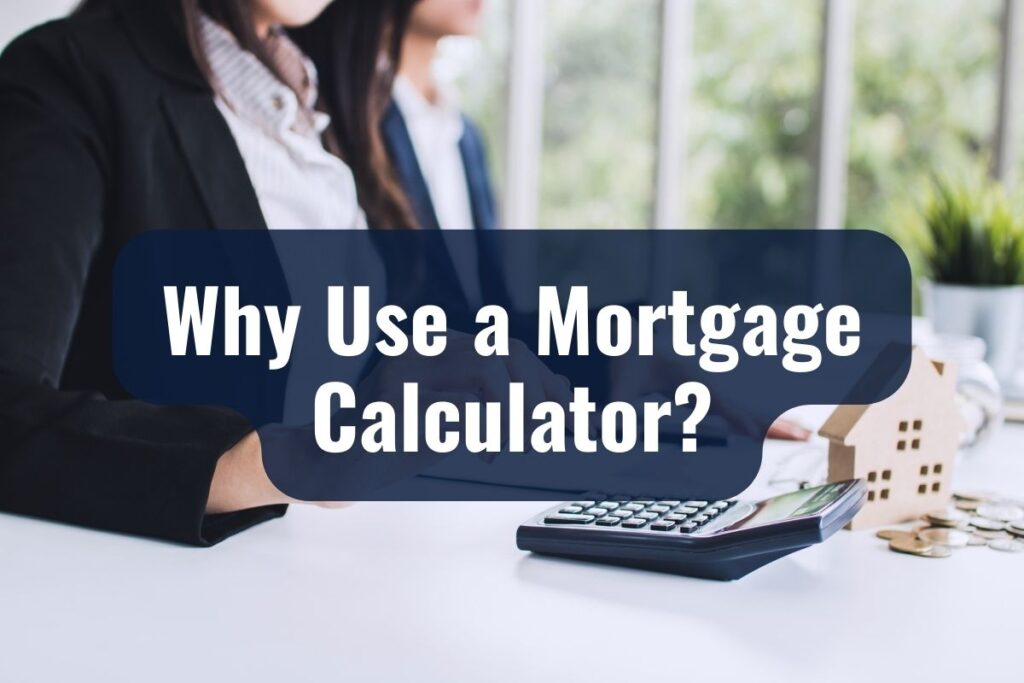Mortgage Calculator
Use our free mortgage calculator to get an idea about your home loan.
- Home Price (NOK): Specify the total purchase price of the home.
- Down Payment (NOK): Indicate the amount you will pay upfront towards the home purchase.
- Interest Rate (%): Enter the annual interest rate of the mortgage loan.
- Loan Term (years): Specify the duration over which you will repay the loan, in years.
- Property Tax (NOK/year): (Optional) Include the annual property tax amount, if applicable.
- Home Insurance (NOK/year): (Optional) Add the yearly cost of home insurance, if desired.
Purchasing a home is a significant step for anyone, and navigating the intricacies of the mortgage system in a foreign country can feel like an uphill battle.
In Norway, like in many other countries, understanding the mechanics of a mortgage is critical to making an informed decision.
Key Takeaways
- Mortgage calculators provide quick, tailored insights into your potential home loan.
- The primary components to consider are loan amount, interest rate, loan term, and down payment.
- While useful, mortgage calculators have limitations and should be complemented with professional advice.
- For accurate results, keep your information updated and cross-reference multiple sources.
The Role of a Mortgage Calculator
It’s essential to grasp what a mortgage will mean for you financially—both now and in the long run. This is where a mortgage calculator becomes invaluable.
With a good mortgage calculator, you’ll be able to understand vital components such as monthly payments, interest rates, and even the amortization schedule. It provides immediate, customized information that can guide your choices reassuringly and straightforwardly.
Why Use a Mortgage Calculator?

Get a Quick Financial Overview
The first reason to use a mortgage calculator is the speed and convenience it offers. Within a matter of minutes, you can gain a better understanding of your potential financial commitment. This allows you to assess whether a particular mortgage is within your budget before you even approach a lender.
Customized Information at Your Fingertips
A mortgage calculator provides tailored results based on the specific information you input. This customization is essential, especially when considering that mortgages are not one-size-fits-all.
Whether you’re a first-time homebuyer or an experienced investor, you can adjust variables like loan terms, down payment, and interest rates to fit your unique situation.
Immediate Results for Informed Decisions
Mortgage calculators deliver instant results, helping you make quick yet informed decisions. In today’s fast-paced real estate market, this can be a significant advantage. You can compare different mortgage options on the fly and decide which one best suits your financial circumstances.
Greater Confidence in Your Choices
A mortgage calculator can offer peace of mind by demystifying the numbers behind your mortgage. It can be reassuring to see a detailed breakdown of your future payments, total interest paid, and other financial metrics. This transparency equips you with the information you need to make a choice you can feel confident about.
Components of a Mortgage Calculator

| Component | Description | Why It’s Important |
| Loan Amount | Price of property minus down payment | Dictates size of the mortgage |
| Interest Rate | The annual cost of borrowing | Affects monthly payments and total cost |
| Loan Term | Duration of the loan in years | Impacts monthly payments and interest |
| Down Payment | Initial upfront payment | Reduces loan amount |
| Extra Payments | Optional payments to reduce principal more quickly | Can shorten loan term and save interest |
Loan Amount: The Starting Point
Your journey with a mortgage calculator begins with the loan amount, which is essentially the price of the property minus your down payment. This is one of the most crucial inputs, as it dictates the size of the mortgage you are considering. Knowing this number helps tailor the calculator to reflect your specific home-buying circumstances.
Interest Rate: The Cost of Borrowing
Interest rates can make a massive difference in the total amount you end up paying back. In Norway, interest rates can vary depending on several factors, including the lender and the state of the economy.
A mortgage calculator will ask you to input an interest rate, allowing you to see how different rates affect your monthly payments and the total interest you’ll pay over the life of the loan.
Loan Term: The Timeline
The loan term refers to how long you’ll be paying off your mortgage. Common loan terms are 15, 20, or 30 years, and each has its pros and cons.
The loan term you select will impact your monthly payments and the total interest paid. A mortgage calculator lets you experiment with different loan terms to see how they influence your finances.
Down Payment: Your Initial Investment
The down payment is the initial amount you pay upfront for the property. In Norway, this is generally around 15% of the property’s price but can vary.
Your down payment directly affects the size of your mortgage loan and, subsequently, your monthly payments. It’s another essential component in mortgage calculations.
Extra Payments: The Optional Boost
Some mortgage calculators also allow you to factor in extra payments. These are additional amounts you can choose to pay, above your required monthly payment, to reduce the principal more quickly. Including extra payments in the calculator helps you see how much faster you could pay off your mortgage and how much interest you could save in the process.
How Does a Mortgage Calculator Work?
Inputting Your Parameters: The First Step
To get started with a mortgage calculator, you’ll need to input several parameters. These typically include the loan amount, interest rate, loan term, and down payment, as previously discussed. Some advanced calculators also allow for additional inputs like extra payments, property taxes, and insurance to give you a more comprehensive view.
The Calculations: Behind the Scenes
Once you’ve entered your information, the calculator performs a series of calculations to generate your results. The primary calculation involves determining your monthly mortgage payment using the loan amount, interest rate, and loan term. Many calculators use the formula for calculating a fixed-rate mortgage, which is the most common type of mortgage in Norway.
Output: What You Get to See
After performing the calculations, the mortgage calculator will provide you with various outputs that can help you in your decision-making process:
Monthly Payment
This is the amount you will need to pay every month for the term of the loan. It is usually broken down into principal and interest components.
Amortization Schedule
An amortization schedule shows how each of your monthly payments is divided between paying off the principal and the interest. It also displays how your loan balance will decrease over time.
Total Interest Paid
Knowing the total interest you’ll pay over the loan term can be eye-opening. This figure helps you understand the real cost of borrowing and can be instrumental in choosing between different loan options.
Limitations of Using a Mortgage Calculator
Estimates, Not Guarantees
The first thing to keep in mind is that mortgage calculators offer estimates rather than exact figures. While these tools provide a good starting point, the actual mortgage terms you receive can vary based on a range of factors, such as your credit score, the lender’s policies, and market conditions.
Overlooking Additional Costs
Mortgage calculators primarily focus on calculating your principal and interest payments. However, owning a home in Norway involves other expenses like property taxes, home insurance, and possibly homeowner association (HOA) fees. These are often not included in standard mortgage calculator outputs, so you’ll need to account for them separately.
Simplification of Interest Rates
Interest rates can be variable or fixed, and they might also include introductory rates that change after a certain period. Most mortgage calculators use a simplified model based on a fixed interest rate for the entire loan term, which may not reflect the complexity of some mortgage products.
No Personalized Financial Advice
While mortgage calculators are valuable tools for initial research, they can’t replace the personalized advice that a financial advisor or mortgage broker can offer. These professionals consider your complete financial picture and long-term goals, providing insights that a calculator cannot.
Currency and Locale-Specific Limitations
If you’re a foreigner dealing with currency conversions or unfamiliar with the Norwegian financial landscape, a generic mortgage calculator might not address these localized issues. Some advanced calculators can deal with multiple currencies and local tax rules, but these are not the norm.
Tips for Accurate Results

Keep Your Information Updated
One of the keys to getting the most accurate results from a mortgage calculator is to input the most current and relevant data. Whether it’s the interest rate or the size of the down payment, ensuring that your inputs reflect your real-world circumstances will give you a more reliable output.
Use Multiple Sources for Comparison
It’s always a good idea to cross-reference your findings. Using multiple calculators from various sources—such as banks, real estate websites, and financial planning apps—gives you a more rounded view. By comparing results, you can better gauge the consistency and reliability of the information you’re receiving.
Include All Potential Costs
While it’s tempting to focus solely on the principal and interest payments, don’t forget about additional costs like property taxes, insurance, and possibly homeowner association fees. Some advanced calculators allow you to input these figures for a more comprehensive view of your future financial obligations.
Factors in Rate Fluctuations
Interest rates can change due to economic conditions or central bank policies. While most calculators work on the assumption of a fixed interest rate, if you have the option to input variable rates, take advantage of it. This will give you a sense of how rate fluctuations could impact your monthly payments and total interest paid.
Consult a Financial Advisor for Personalized Advice
While a mortgage calculator is a fantastic tool for initial research, consulting with a financial advisor or mortgage broker can provide you with tailored advice that considers your complete financial picture. This personalized input can be invaluable in navigating the complexities of the mortgage landscape, especially in a foreign country like Norway.
Armed with these tips, you can utilize mortgage calculators more effectively, gaining insights that are both accurate and tailored to your unique situation. The tool serves as an invaluable starting point in your home-buying journey, helping to remove the guesswork and instill a sense of financial confidence.


